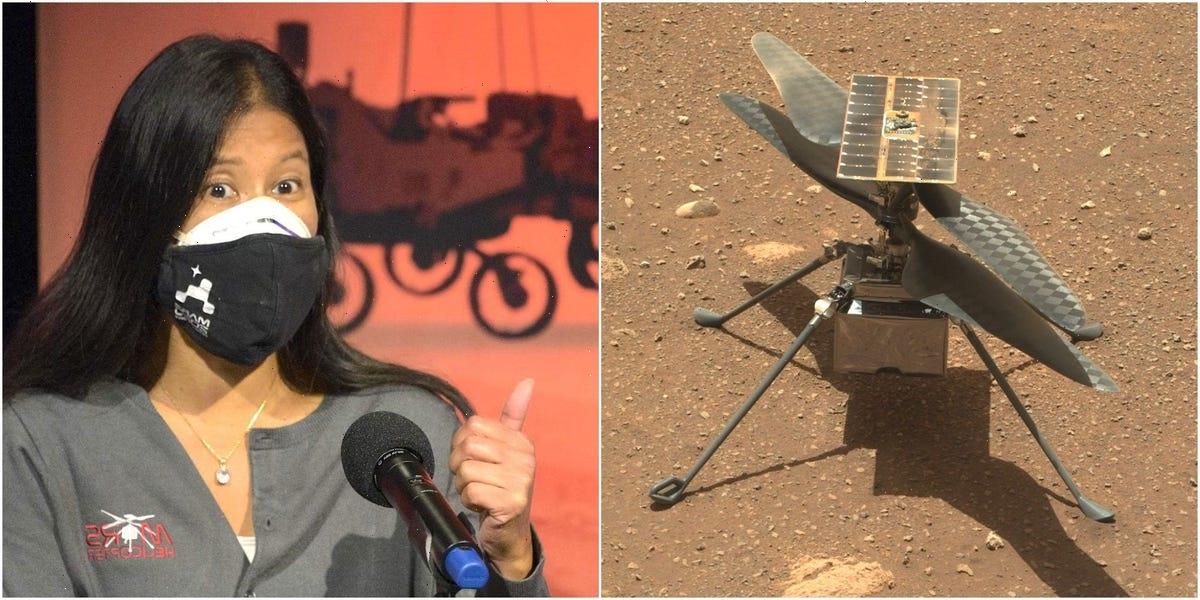- NASA plans to push its Ingenuity Mars helicopter “to the limit” — as far and fast as it will go.
- During the next four flights, engineers hope to get as much data as possible for future drones.
- Mission controllers don’t expect the helicopter to survive.
- See more stories on Insider’s business page.
NASA’s Ingenuity helicopter made spaceflight history on Monday when it lifted off the surface of Mars.
The 4-pound space drone powered up its rotors, spinning them five times faster than a helicopter on Earth. This gave it enough lift in the thin Martian atmosphere to rise 10 feet above the planet’s surface. There, it hovered, pivoted toward the onlooking Perseverance rover, and gently lowered itself to the ground.
Never before has a spacecraft conducted a controlled, powered flight on another planet.
Ingenuity has proven that aerial exploration is possible on other planets, but its mission is far from over. Now NASA wants to gain as much flight data as possible to inform future space-helicopter efforts.
In up to four more flights over the next two weeks, Ingenuity’s controllers plan to push the helicopter as far and fast as it will go. In the process, they expect Ingenuity will crash.
“We really want to push the rotorcraft flights to the limit and really learn and get information back from that,” MiMi Aung, the project manager for Ingenuity, said in a post-flight press briefing.
“That information is extremely important,” she added. “This is a pathfinder. This is about, you know, finding if there any ‘unknown unknowns’ that we can’t model. And we really want to know what the limits are. So we will be pushing the limits, very deliberately.”
An artist’s concept of Ingenuity flying through the Martian skies.NASA/JPL-Caltech
Based on how the next two flights go, NASA’s Ingenuity team will decide how far to push the helicopter for its final excursions.
The fifth and final venture could take Ingenuity up to 15 feet high and laterally across 980 feet of Martian ground, according to NASA’s website. Aung, however, said she would “love” to push it over 2,000 feet.
By the fifth flight, the helicopter “would be unlikely to land safely, because we’ll start going into un-surveyed areas,” Aung said in a preflight briefing.
“If we do have a bad landing, that will be the end of mission,” she added. “The lifetime will be determined by how well it lands, pretty much.”
‘Going really far and really fast’
For Ingenuity’s next flight, which could happen as early as Thursday, the helicopter should rise about 15 feet above the Martian surface. Instead of hovering, it should fly about six feet away from the spot where it lifted off, then land in its original position.
In the later flights, as Ingenuity moves farther away, controllers might also push the limits of the helicopter’s speed.
“I care about going really far and really fast,” Aung said. “As fast as we can go.”
By flight three, Ingenuity’s speed could double to 6 feet per second. Aung didn’t specify how fast she would want it to fly in later escapades.
Speeding up will challenge the chopper’s mechanics as well as its navigation system.
“We navigate by taking images of the ground below. And as we’re traveling faster over the ground, the features in those images disappear from you faster,” Håvard Grip, Ingenuity’s chief pilot, said in the post-flight briefing.
The NASA engineers are pushing themselves over the next two weeks, too. Preparations and a delay caused by a software issue consumed the first two weeks of their 30-day window to conduct up to five flights. Now, just two weeks remain before Perseverance has to continue on its main alien-fossil-hunting mission.
“I believe we have enough time to squeeze the next four flights in the next few weeks left,” Aung said.
Source: Read Full Article
